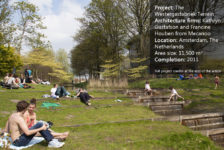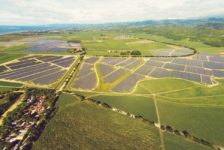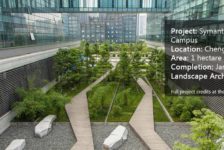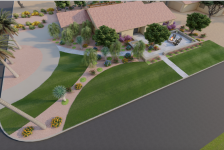Artificial intelligence has made significant strides in various fields, and landscape architecture and design are no exceptions. In this rapidly evolving landscape, AI image-generating software is offering a wealth of creative possibilities. These tools are valuable for early concept development, idea testing, and even final renderings. While some of the best options come at a price, there are free alternatives that offer customization and unique features. In this video, I delve into the world of AI image generation and explore some of the programs that have already made their mark and those poised to revolutionize the industry. I have also recapped the video here for Land8 subscribers.
- Midjourney – The Popular Choice
One of the most well-known AI image generation tools is Midjourney, a prompt-style rendering tool that transforms your words into images or image series. Landscape architects and designers often use it to brainstorm and flesh out early design concepts. With the potential for more advanced prompt engineering, it could even become a viable tool for producing final renderings for presentations. While it’s no longer free, Midjourney is relatively affordable and offers a supportive community for learning and sharing insights.
- DALL-E – A Familiar Alternative
DALL-E, much like Midjourney, follows the prompt-based image generation model. Users type in prompts, and the software generates a variety of images based on those prompts. DALL-E, however, introduces a unique feature that allows you to extend an existing image, opening up creative possibilities. While it’s no longer free and requires purchasing credits, DALL-E remains a popular choice for those in the landscape architecture and design field.
- Adobe’s Generative Fill – A Game-Changer
For Adobe users, the Generative Fill option in Photoshop offers a powerful tool for image enhancement. You can circle an area on an image and provide a prompt for what you want to add or change. This tool is especially useful for inserting objects like trees, people, or other elements seamlessly, eliminating the need to hunt for PNGs and make them fit. As part of the Adobe ecosystem, this tool is a valuable addition for landscape architects and designers who use Adobe software.
- Adobe Firefly – The All-in-One Solution
Adobe Firefly is another remarkable AI image generation tool within the Adobe network. Similar to other image generation software, it relies on prompts to create images. However, Firefly offers additional features like creating color palettes from words, recoloring vector images, and generating 3D renders from model images. This all-in-one approach makes Firefly a robust choice for designers already using Adobe software.
- Stable Diffusion – The Free Customizer
For those looking for a free alternative, Stable Diffusion stands out. It offers the standard prompt-based image generation, but with an added twist. Users can select from different styles, parameters, and sizes to customize their results. This ability to fine-tune the generated images makes Stable Diffusion an attractive option for those who want more control over the final outcome.
- Crayon – An Abstract Twist
Crayon, another free AI image generator, has a unique abstract approach to image generation. While it may not be as polished as some other tools for architectural purposes, Crayon offers opportunities for experimenting with abstract designs. It can be particularly useful for creating custom PNGs and supporting graphics that complement main design concepts.
- Fotor’s AI Image Generator – The All-Rounder
Fotor’s AI Image Generator is another free tool that offers preset styles and customization options. It can be a valuable resource for landscape architects and designers who want to experiment with different image styles and parameters. Notably, it allows users to enhance existing photos, making it a handy tool for improving renderings and graphics.
By getting familiar with AI image generation tools early, landscape architects and designers can stay at the forefront of this exciting transformation. As the AI landscape continues to evolve, professionals should embrace these tools and stay prepared for the game-changing integration of AI into traditional design software. AI is not here to replace designers but to enhance their creative capabilities and streamline their work processes. It’s an exciting time to be part of the landscape architecture and design industry as we embrace the potential of AI.
Published in Blog, Cover Story, Featured








